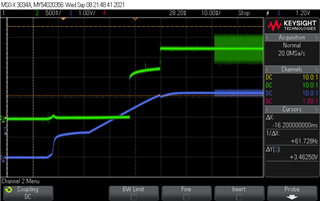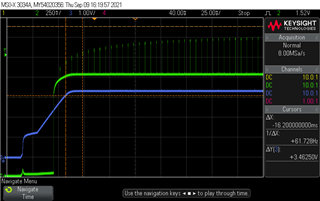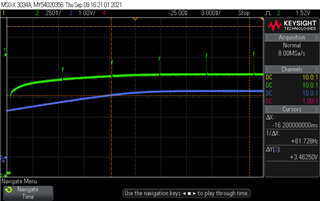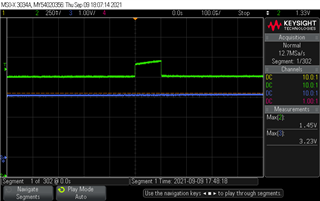We are using TUSB1042I in a USB 3.1 gen 1 device with Type-C connector. We experience a problem with TUSB1042I during it's power-up (in cold condition only, which varies between devices, but some devices experience it already around 15 C).
If the host (RX1/TX1 port) is attached during power-up the TUSB1042I senses the false far end termination on SSRX port (even though the receiver is disabled, i.e. still in high impedance). As a result TUSB1042I enables the rx termination on RX1. As a result the host connected to RX1 enters the compliance mode (because there is nobody on SSRX/SSTX to reply to it's LFPS signal).
I have following questions (more information is provided below):
- Is this behavior known to TI?
- Is there a way to delay the device start-up or far end rx termination detection logic?
We are using TUSB1042I in I2C mode, but the type-C controller responsible for programming the I2C register is powered up by the same 3.3 V rail as TUSB1042I, so it is not possible to disable the USB3.1 mode in CTLSEL bit of 0x0A register, before the false termination is detected and termination activated on RX1.
On the following oscilloscope capture, the channel 2 (green) is one signal of the SSRX pair (measured on the TUSB1042I side of decoupling capacitor) and channel 3 (blue) is 3.3 VCC to the TUSB1042I. The power ramp-up is about 40-50 ms (within the required spec of 100 ms). It seems that TUSB1042I enables it's transmitter on SSRX port and runs the far-end termination detection logic while the power-rail is not fully up (around 2.5 V). After just 2 iterations of rx termination detections, the TUSB1042I goes into U0 state.

In the screen-shot above, the amplitude of the SSRX signal seem to be not fully up during the power-up. Could it be the reason for false rx-detection.
In further captures, the level of SSRX line has been analyzed by detaching the host (RX1/TX1 port) before power-up. And it seems that after the “internal” power inside the TUSB1042I saturates, the rx-detection logic on SSRX line is working correctly (i.e. no false rx-detection events are recorded and the rx-detection pulses look correct).
Here is the image of working rx-termination detection. The first 3 pulses are seen with SSRX receiver in high-impediance. The SSRX receiver termination is seen by slight voltage drop in the middle. Than the
two detection pulses have reduced amplitude due to enabled termination.
The following image shows how the levels change during the start-up (U0 is not entered because no host is attached).

A slight zoom-in of above

And finally close-up of some pulses..





Best regards,
Edgar

